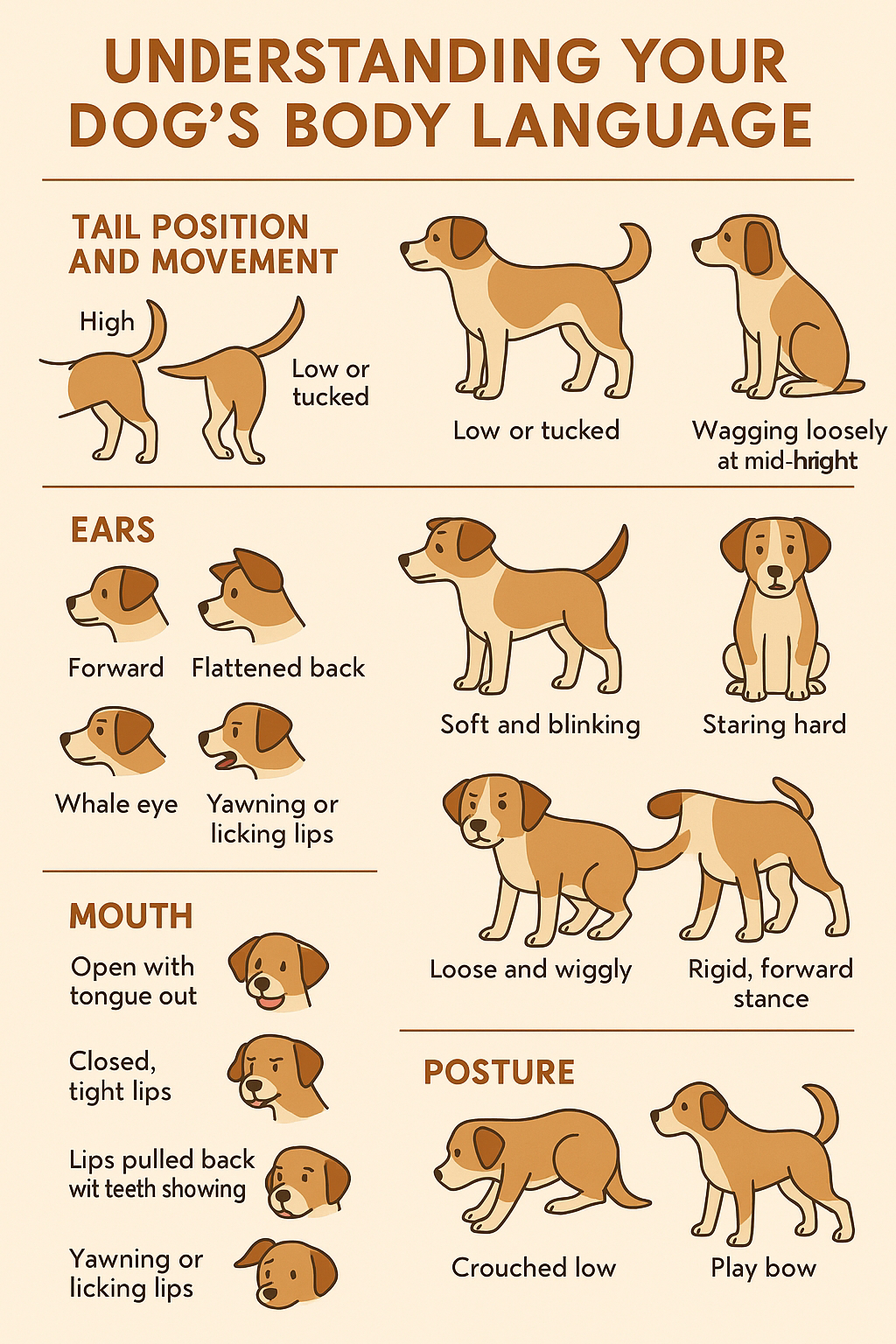Dogs may not speak with words, but they are constantly communicating. Through tail wags, ear positions, posture, and vocalizations, dogs tell us how they’re feeling—if we know how to listen. Understanding canine body language can improve your relationship, prevent misunderstandings, and help keep both dogs and people safe.
Why Dog Body Language Matters
Every dog owner has wondered at some point, What is my dog thinking? Learning to interpret body language helps answer that question. Whether you're introducing your dog to new people, working through training issues, or trying to prevent conflict at the dog park, understanding body signals allows you to respond appropriately.
Misreading or ignoring these cues can lead to fear, anxiety, or even aggression. But when you pay attention and respect your dog’s signals, you build trust and mutual respect.
Key Elements of Dog Body Language
Tail Position and Movement
- High and stiff: Alert or possibly aggressive.
- Low or tucked: Fearful or submissive.
- Wagging loosely at mid-height: Friendly and relaxed.
- Fast, stiff wagging: Alert or on edge—not always happy!
Ears
- Forward: Curious, alert, or confident.
- Flattened back: Scared, anxious, or submissive.
- Neutral and relaxed: Calm and content.
Eyes
- Soft and blinking: Relaxed and trusting.
- Staring hard: Threatening or challenging.
- Whale eye (white showing): Anxious, unsure, or warning of discomfort.
Mouth
- Open with tongue out: Relaxed or hot.
- Closed, tight lips: Tense or focused.
- Lips pulled back with teeth showing: Fear or warning—back off.
- Yawning or licking lips: Stress signal (especially if out of context).
Posture
- Loose and wiggly: Friendly and relaxed.
- Rigid, forward stance: Focused, alert, or aggressive.
- Crouched low: Nervous or submissive.
- Play bow (front down, rear up): Inviting play!
Vocalizations: What Barks and Growls Really Mean
Dogs use more than body language—they vocalize too:
- High-pitched bark: Excitement or alert.
- Low growl: Warning or fear.
- Whining: Anxiety, pain, or a request.
- Howling: Communication, loneliness, or joining in.
Always consider vocalizations alongside body language. A playful growl during tug is very different from a tense growl during a confrontation.
Putting It All Together
Reading dog body language is about the whole picture—not one part in isolation. A wagging tail doesn’t always mean a happy dog. Context, posture, and other cues matter. The more you observe your dog in different situations, the more fluently you’ll understand them.
Tips for Better Communication
- Observe calmly—don’t overwhelm your dog.
- Respect signs of stress or fear—don’t push interactions.
- Reinforce positive communication with treats and praise.
- Be your dog’s advocate in uncomfortable situations.
Final Thoughts
Learning your dog’s body language is one of the most powerful things you can do as a dog owner. It builds trust, prevents conflict, and deepens the bond between you. Dogs are always talking—we just need to learn how to listen.



